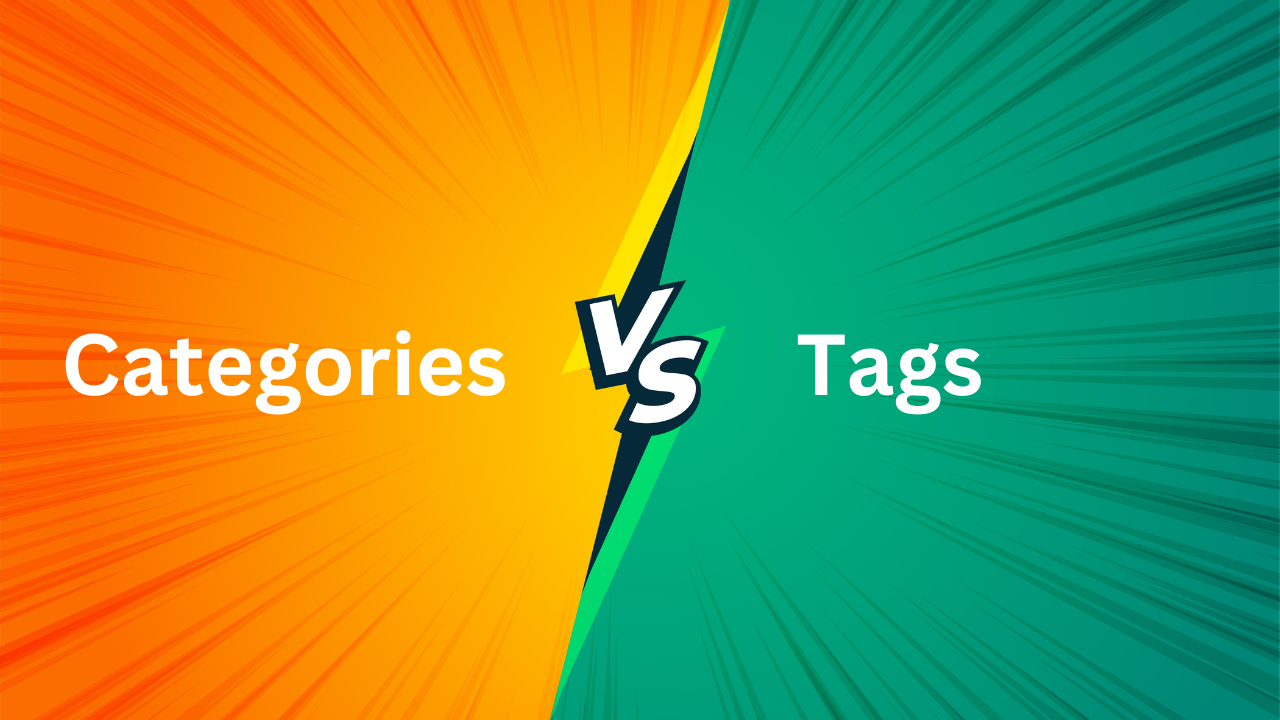Struggling to differentiate between the appropriate use of categories and tags on your WordPress posts? Finding the distinction between the two a bit blurry and inconsequential? In this article, we’ll delve into the contrast between Categories vs. Tags and discover how to effectively utilize them within your WordPress posts. By understanding their roles, you can enhance SEO and expedite your blog readers’ quest for relevant content!

Table of Contents
ToggleLearning Outcomes:
After completing this course, learners will be able to:
- Distinguish Between Categories and Tags: Clearly differentiate between the roles and purposes of categories and tags in organizing digital content.
- Apply Strategic Organization: Implement categories for overarching content themes and tags for specific details to create a well-structured and user-friendly content ecosystem.
- Optimize SEO Practices: Understand how utilizing categories and tags can contribute to improved search engine optimization (SEO) and higher visibility in search results.
- Enhance User Navigation: Utilize categories to guide users to general content areas and leverage tags to enable efficient content filtering, facilitating seamless user navigation.
Categories vs. Tags: Understanding the Distinction
If you’re new to the world of blogging, you might have encountered two options in your post settings: categories and tags. Initially, these might seem quite similar, with their dashboards appearing almost identical. However, categories and tags are vital components of WordPress taxonomies, serving distinct purposes in the organization of your website’s content. Let’s delve into the differences between these two and explore their significance for both content organization and SEO optimization.
Defining Categories and Tags

Categories and Tags are both methods of classifying and organizing content on your website, aiding users and search engines in understanding your content and navigating through it effectively. They play a crucial role in enhancing user experience and optimizing your content for better search engine rankings.
Also Read: How to get all posts in a specific category in WordPress
Differentiating Categories and Tags
To distinguish between categories and tags, consider this analogy: think of a vast library with diverse book categories. Just as the library sections categorize books into genres like fiction, non-fiction, and poetry, WordPress categories are like these sections, broadly grouping your posts into major topics. This makes it easier for readers looking for specific themes to locate relevant content.
On the other hand, imagine you want to find all the books related to a specific topic, like “dinosaurs.” These books might be scattered across various sections. In the same way, tags in WordPress act as detailed labels, allowing users to discover related content irrespective of categories. Unlike categories, tags don’t group your posts; instead, they provide specific details through keywords. For instance, if you have a recipe post categorized under “desserts,” you could use tags like “chocolate,” “quick and easy,” or “gluten-free” to help users find the recipe more efficiently.
Moreover, categories are hierarchical, allowing the creation of subcategories to further organize content. They work best for broad topics and are generally mandatory when creating a WordPress post. Tags, on the other hand, are non-hierarchical and can be applied across different categories. They’re optional but recommended for offering specific information and improving content discoverability.
Effective Use of Categories and Tags
To use categories and tags effectively:
- Use One Category Per Post: Assign each post to only one category whenever possible to prevent content from being spread too thin.
- Leverage Subcategories: Use subcategories when necessary to organize and separate content within main categories, creating a structured hierarchy.
- Be Selective with Tags: Utilize tags to provide specific details related to your content. Avoid overusing tags or including irrelevant ones.
- Avoid Empty or Duplicate Entries: Ensure all categories and tags have a purpose and aren’t redundant. Avoid creating duplicates or empty entries.
- Regularly Audit and Clean Up: Periodically review your tags and categories to eliminate redundancy, outdated terms, and irrelevant entries.
Conclusion
In conclusion, understanding the distinction between categories and tags is essential for effective content organization and SEO optimization. Categories serve as broad groupings for your posts, while tags provide specific details for content discoverability. Mastering their proper use can greatly enhance user experience and improve your website’s overall performance.
Interesting Reads:
How To Start Homeschooling: An Ultimate Guide
The Best 9 Print On Demand WooCommerce Plugins
Marketing 101: How to Reach Your Target Audience and Grow Your Business







